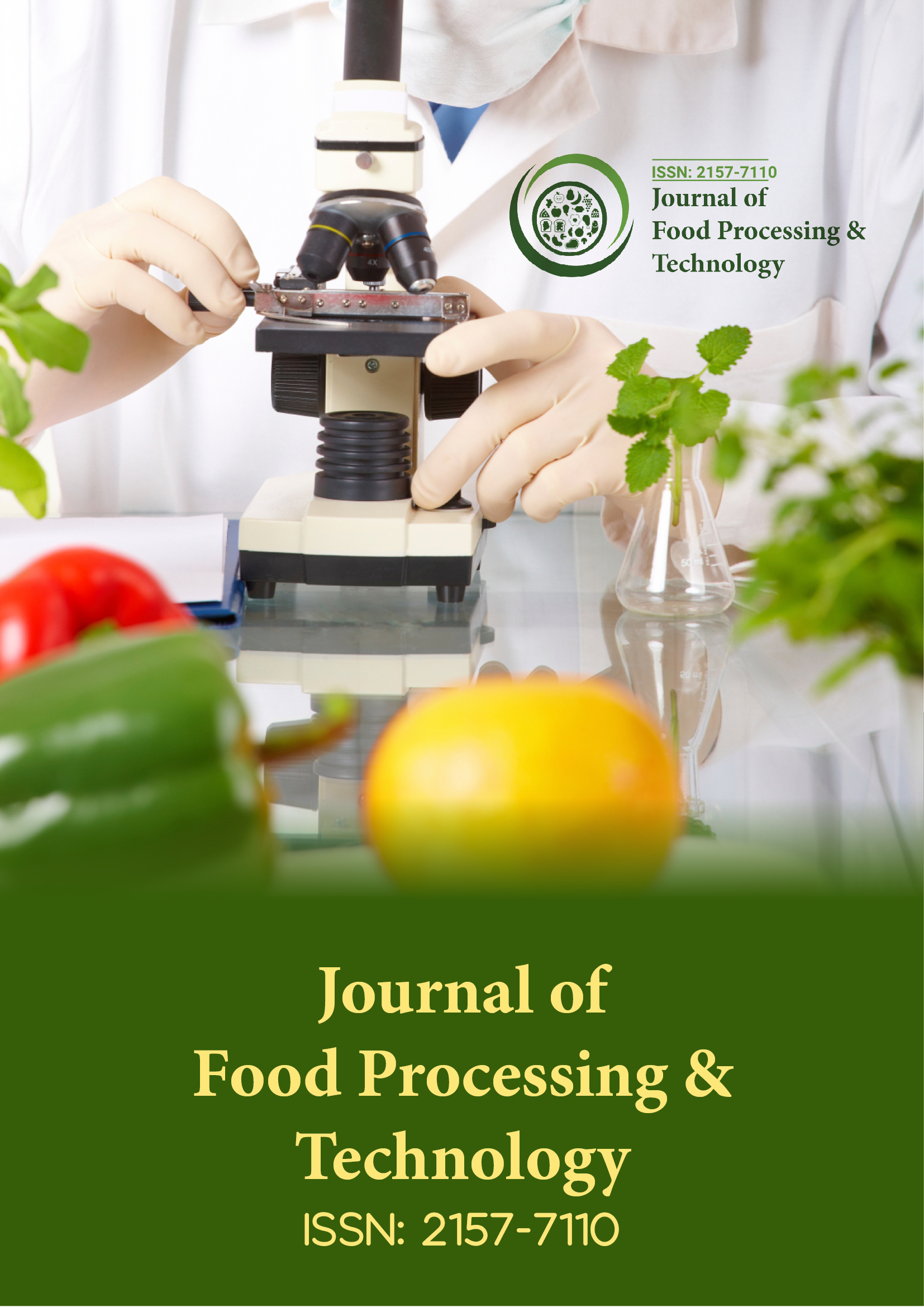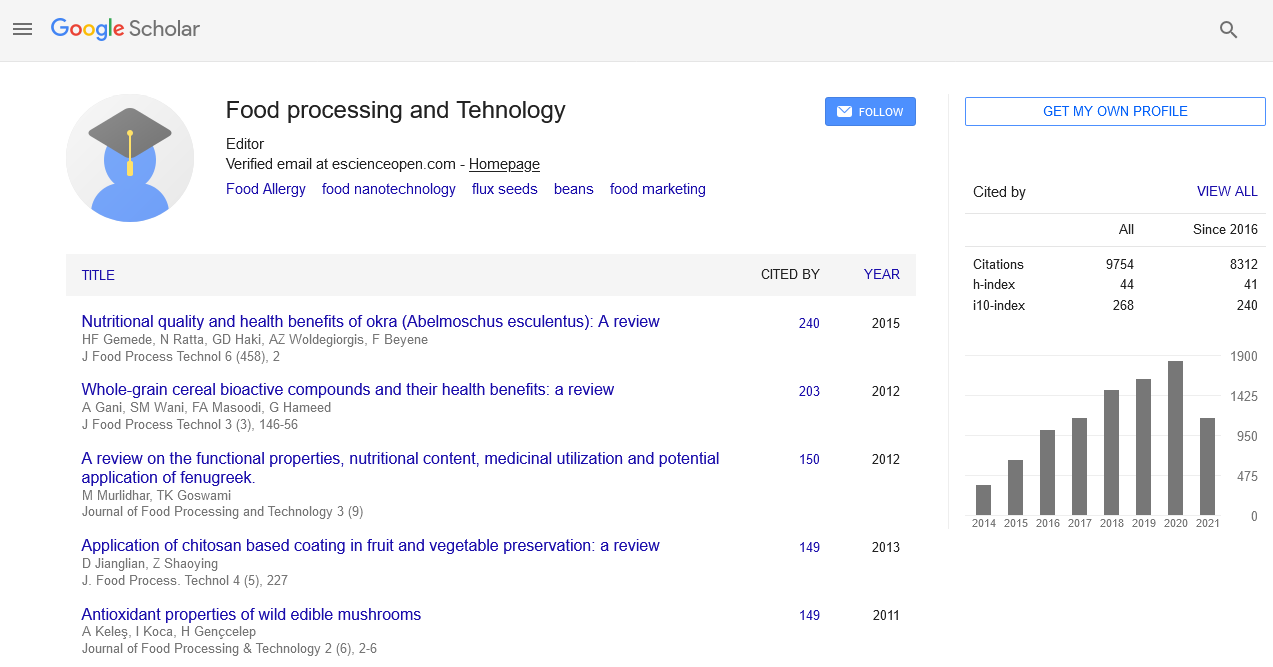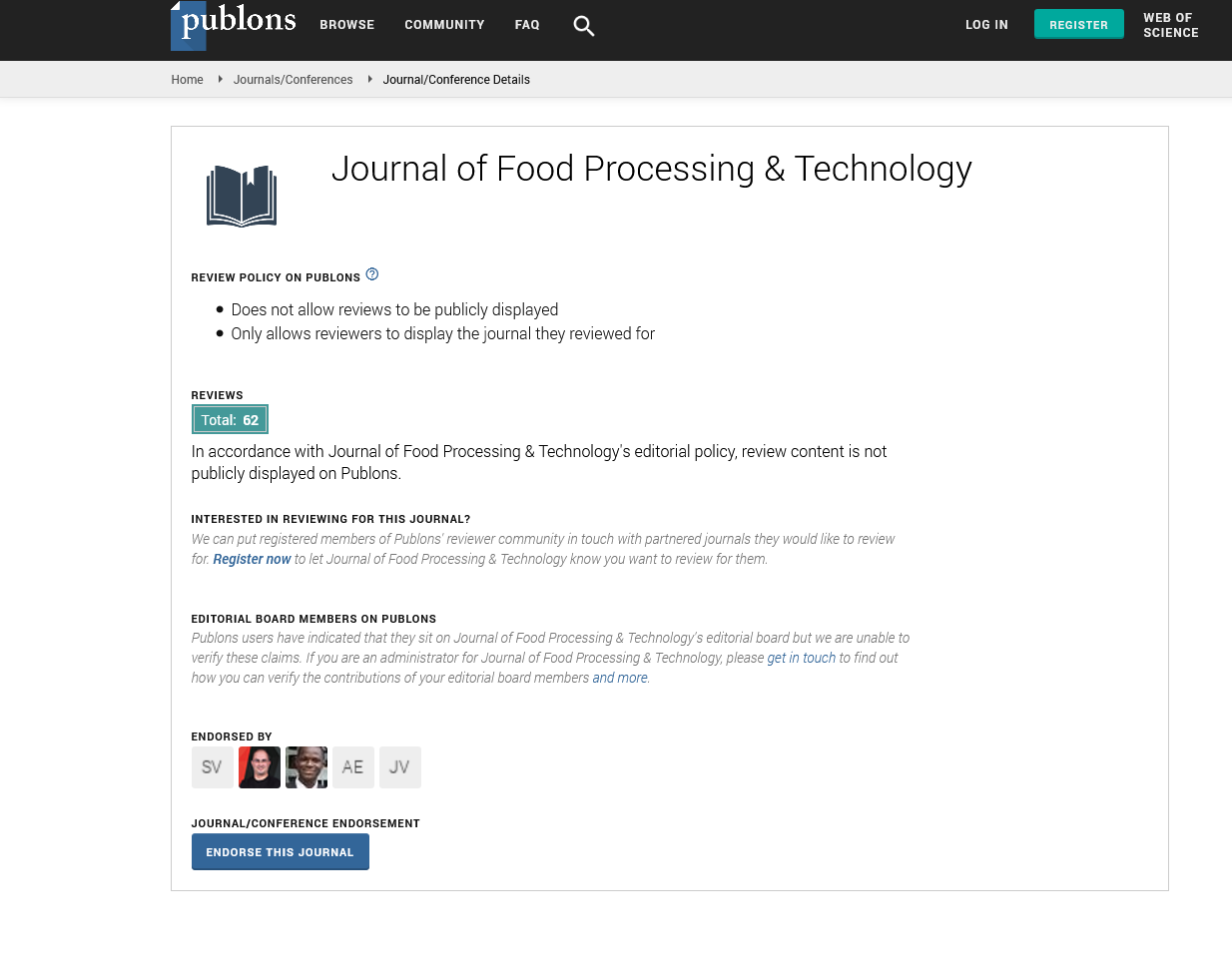Indexed In
- Genamics JournalSeek
- Academic Keys
- JournalTOCs
- China National Knowledge Infrastructure (CNKI)
- Access to Global Online Research in Agriculture (AGORA)
- Centre for Agriculture and Biosciences International (CABI)
- RefSeek
- Directory of Research Journal Indexing (DRJI)
- Hamdard University
- EBSCO A-Z
- OCLC- WorldCat
- Scholarsteer
- SWB online catalog
- Publons
- Euro Pub
- Google Scholar
Useful Links
Share This Page
Journal Flyer

Open Access Journals
- Agri and Aquaculture
- Biochemistry
- Bioinformatics & Systems Biology
- Business & Management
- Chemistry
- Clinical Sciences
- Engineering
- Food & Nutrition
- General Science
- Genetics & Molecular Biology
- Immunology & Microbiology
- Medical Sciences
- Neuroscience & Psychology
- Nursing & Health Care
- Pharmaceutical Sciences
Publication Ethics
Publication Ethics and Malpractice Statement
The Journal of Food Processing & Technology abides by the ethical matters and errors and would also conduct a legal review if required. The journal ensures reprinting or advertising does not influence the decisions of editors. The Editorial Board of the journal allows you to communicate with other publishers, journals and authors on request for connection.
Authors Responsibilities
An author is expected to present the account of work in a genuine manner along with the significance. The authors are expected to present original works, and an appropriate citation should be made on citing the works of others.
An author should not include the same research in more than one manuscript for a primary publication or journal. The reported scope of work should be based on proper citation from the other publications influencing.
Any financial or personal interest that governs the findings or research in the manuscript, along with the details of financial support and its sources, should be revealed.
Reviewers Responsibilities
Reviewer is responsible to both the author and the editor in regard to the manuscript. Peer review is the principal mechanism by which the quality of research is judged. Most funding decisions in science and the academic advancement of scientists are based on peer-reviewed publications.
Ethical Responsibilities of Reviewers
- Confidentiality: - Reviews and reviewer comments should be held confidentially. Manuscripts or copies of the process should not be retained with the reviewers after the process is commenced
- Constructive Evaluation: - Decisions and judgment should be constructive that provides legible insight to author without any controversy or inefficiencies with the review process
- Competence: -Reviewer with passable expertise will serve the purpose to complete the review. People lacking adequate expertise should feel responsible and can decline the review.
- Impartiality and Integrity: - Reviewer decision should solely depend on scientific merit, relevance to the subject, scope of the journal rather on financial, racial, ethnic origin etc of the authors.
- Timeliness and Responsiveness: - Reviewer should be responsible to complete the review within the relevant time and should take all necessary steps to fulfill the limitations of the journal.
Responsibilities of the Editor and Editorial Board
Publication decisions: The decision to publish an article submitted to the Journal of Food Processing & Technology is taken by the editorial board. The editor must stick to the contemporary regulations pertaining to libel, copyright infringement and plagiarism that are effective. He is entitled to carry out decision-making in consultation with reviewers or members of the editorial board.
Fair play: an editor should evaluate manuscripts for their intellectual content without regard to race, gender, sexual orientation, religious belief, ethnic origin, citizenship, or political philosophy of the authors.
Confidentiality: the editor and any editorial staff must not disclose any information about a submitted manuscript to anyone other than the corresponding author, reviewers, potential reviewers, other editorial advisers, and the publisher, as appropriate.
General duties and responsibilities of the editor
Actively seek the views of authors, readers, reviewers and editorial board members about ways of improving their journals processes.
Encourage and be aware of research into peer review and reassess journal processes in the light of new findings.
Support initiatives designed to reduce academic misconduct.
Support initiatives to educate researchers about publication ethics.
Assess the effects of their journal policies on author and reviewer behavior and revise policies, as required, to encourage responsible behavior and discourage misconduct
Ensure that any press releases issued by the journal reflect the message of the reported article and put it into context.
[1] Relations with readers
Ensure that all published reports of research have been reviewed by suitably qualified reviewers (e.g. Including statistical review where appropriate).
Ensure that non-peer-reviewed sections of their journal are clearly identified.
Adopt processes that encourage accuracy, completeness and clarity of research reporting.
Consider developing a transparency policy to encourage maximum disclosure about the provenance of nonresearch articles.
Adopt authorship or contributorship systems that promote good practice (i.e. So that listings accurately reflects who did the work) and discourage misconduct.
Inform readers about steps taken to ensure that submissions from members of the journals staff or editorial board receive an objective and unbiased evaluation
[2] Relations with authors
Publish clear instructions in their journals about submission and what they expect from others.
Provide guidance about the criteria for authorship and/or who should be listed as a contributor.
Review author instructions regularly and provide links to relevant guidelines (e.g. COPE).
Require all contributors to disclose relevant competing interests and publish corrections if competing interests are revealed after publication.
Ensure that appropriate reviewers are selected from submissions (i.e. Individuals who are able to judge the work and are free from disqualifying competing interests).
Respect requests from authors that an individual should not review their submission, if these are well-reasoned.
Be guided by the COPE flowcharts in cases of suspected misconduct or disputed authorship.
Publish details of how they handle cases of suspected misconduct (e.g. With links to the COPE flowcharts).
[3] Editors, the peer review process, and relations with reviewers
Editors should provide reviewers with guidelines, which should be current.
Editors should strive to protect peer reviewers identities.
Editors should ensure that material submitted to their journal remains confidential while under review.
[4] Relations with editorial board members
Identify suitably qualified editorial board members who can actively contribute to the development and good management of the journal.
Appoint editorial board members for a fixed term of office (e.g. Three years).
Provide clear guidance to the editorial board members about their expected functions and duties, these
might include:
- acting as ambassadors for the journal
- supporting and promoting the journal
- seeking out the best authors and best work (e.g. From meeting abstracts) and actively encouraging
submissions:
- reviewing submissions to the journal
- accepting commissions to write editorials, reviews and commentaries on papers in their specialist area
- attending and contributing to editorial board meetings
- Consult editorial board members regularly (at least once a year) to gauge their opinions about the running of the journal, inform them of any changes to journal policies, and identify future challenges
[5] Relationship with publishers, owners, and advertisers
The relationship of editors to publishers and owners is often complex but should in each case be based firmly on the principle of editorial independence. Notwithstanding the economic and political realities of their journals, editors should make decisions on which articles to publish based on quality and suitability for readers rather than for immediate financial or political gain. Editors should have declared policies on advertising in relation to the content of the journal and on processes for publishing supplements.
Conflict of interest
Editors should have systems for managing the conflicts of interest of themselves, their staff, authors, and reviewers. Readers should be informed on who has funded research and on the role of the funders in the research.
Guidelines for retracting articles
Journal of Food Processing & Technology takes its responsibility to maintain the integrity and completeness of the scholarly record of our content for all end users very seriously. Journal of Food Processing & Technology places great importance on the authority of articles after they have been published and our policy is based on best practice in the academic publishing community.
It is a general principle of scholarly communication that the editor of a learned journal is solely and independently responsible for deciding which articles submitted to the journal shall be published. In making this decision, the editor is guided by the policies of the journal's editorial board and constrained by such legal requirements in force regarding libel, copyright infringement and plagiarism. An outcome of this principle is the importance of the scholarly archive as a permanent, historic record of the transactions of scholarship. Articles that have been published shall remain extant, exact and unaltered as far as is possible. However, very occasionally circumstances may arise where an article is published that must later be retracted or even removed. Such actions must not be undertaken lightly and can only occur under exceptional circumstances, such as:
Article Withdrawal: Only used for Articles in Press which represent early versions of articles and sometimes contain errors, or may have been accidentally submitted twice. Occasionally, but less frequently, the articles may represent infringements of professional ethical codes, such as multiple submission, bogus claims of authorship, plagiarism, fraudulent use of data or the like.
Article Retraction: Infringements of professional ethical codes, such as multiple submission, bogus claims of authorship, plagiarism, fraudulent use of data or the like. Occasionally a retraction will be used to correct errors in submission or publication.
Article Removal: Legal limitations upon the publisher, copyright holder or author(s).
Article Replacement: Identification of false or inaccurate data that, if acted upon, would pose a serious health risk..
Maintain the integrity of the academic record
Encouraging academic integrity
Request evidence of ethical research approval for all relevant submissions and be prepared to question authors about aspects such as how patient consent was obtained or what methods were employed to minimize animal suffering.
Ensure that reports of clinical trials cite compliance with the Declaration of Helsinki, Good Clinical Practice and other relevant guidelines to safeguard participant.
Ensure that reports of experiments on, or studies of, animals cite compliance with the US Department of Health and Human Services Guide for the Care and Use of Laboratory Animals or other relevant guidelines.
Consider appointing a journal ethics panel to advise on specific cases and review journal policies periodically.
Ensuring the integrity of the academic record
Take steps to reduce covert redundant publication, e.g. by requiring all clinical trials to be registered.
Ensure that published material is securely archived (e.g. Via online permanent repositories, such as PubMed Central).
Have systems in place to give authors the opportunity to make original research articles freely available.
Preclude business needs from compromising intellectual and ethical standards.
Errors, inaccurate or misleading statements must be corrected promptly and with due prominence. Editors should follow the COPE guidelines on retractions.


